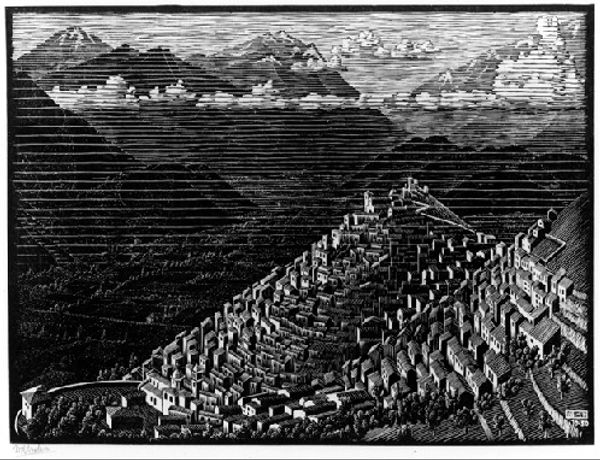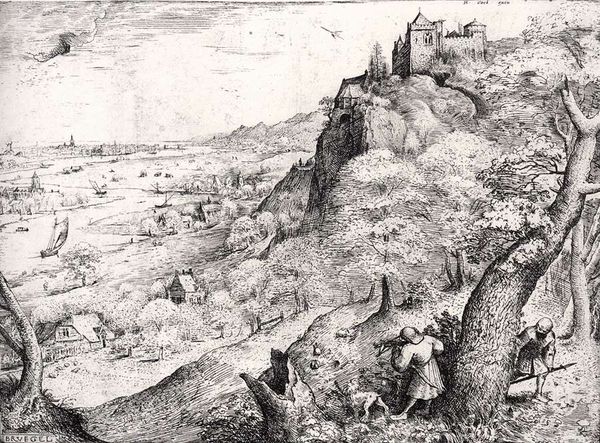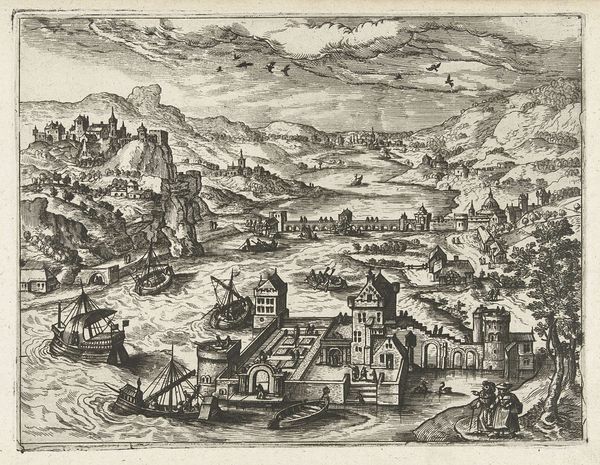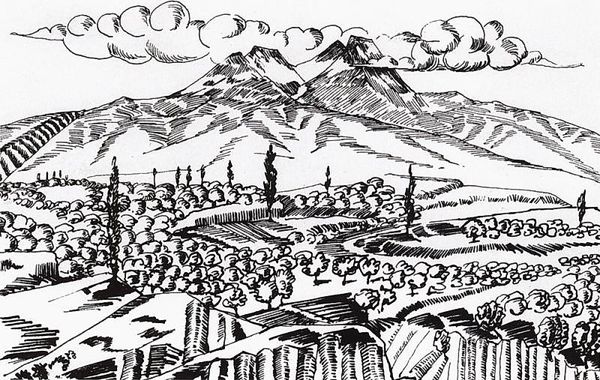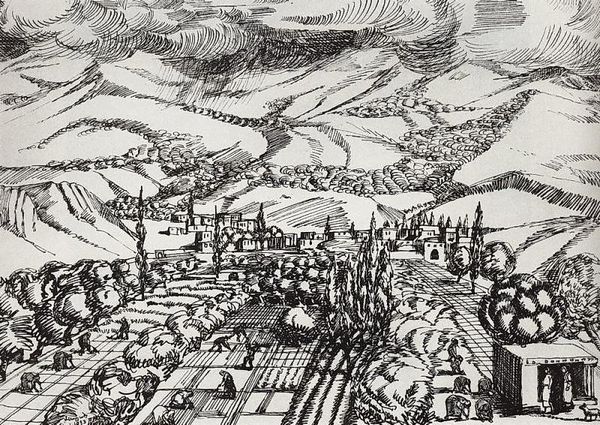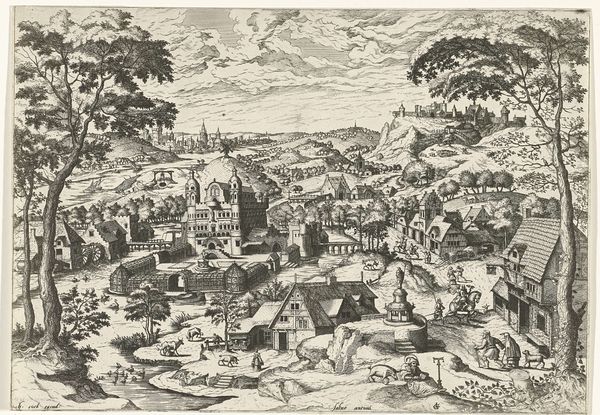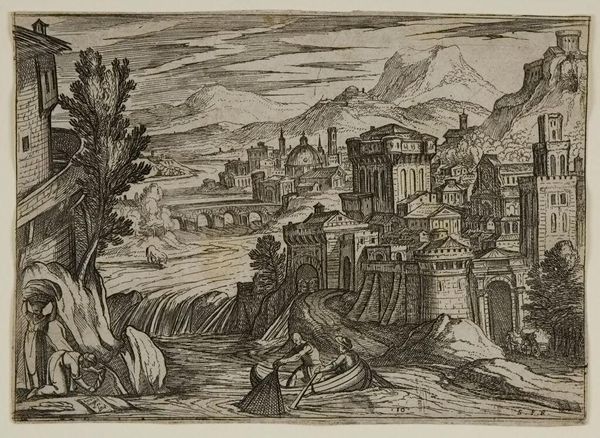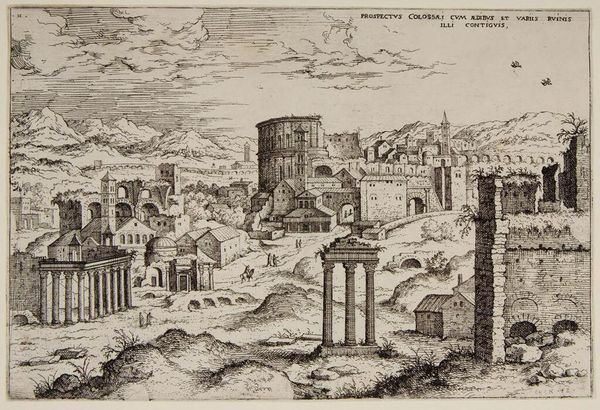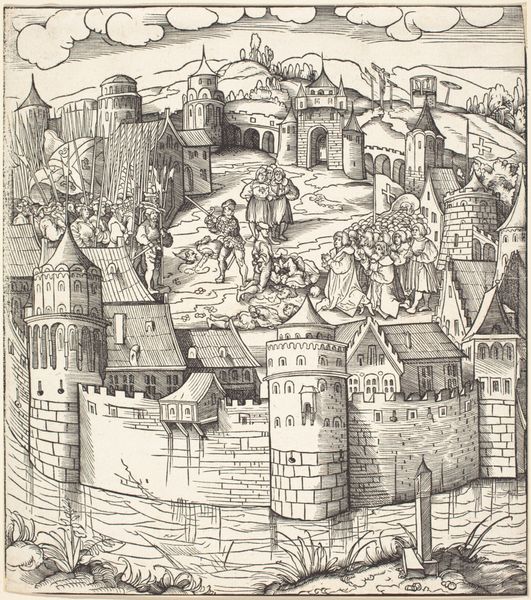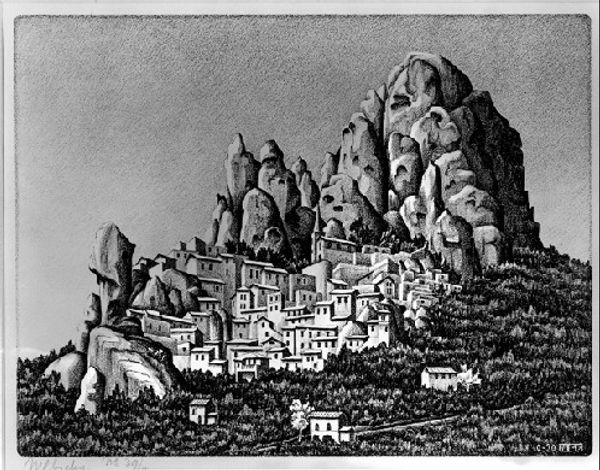
Copyright: M.C. Escher,Fair Use
Curator: Looking at M.C. Escher’s “Santa Severina, Calabria (February 1931)”, I am immediately struck by the sense of imposing monumentality juxtaposed with what seems to be a relentless struggle upwards from the base. What is your take on this print? Editor: My first impression focuses on the physical effort embodied in the making of this work – all those lines, meticulously rendered to describe the rugged landscape. The medium itself, print, is intimately linked with labour and mass production. Curator: Yes, absolutely. The labor and sheer effort speaks to something beyond just a pretty picture; this print, from 1931, comes during a period of great political tension across Europe, which surely shapes Escher’s presentation of space and power. That vertiginous climb towards the citadel seems fraught with the implications of societal and political ambition, don't you think? Editor: The stark black and white emphasizes the harsh reality, the demanding environment. The materials he chose reflect an accessibility – print as a democratic medium compared to painting, aligning more closely with craft and utility. The landscape becomes almost an allegory for socio-economic stratification and its intrinsic demands of labor. Curator: Interesting – I appreciate that perspective. For me, I can’t help but overlay my understanding of Gramsci’s concept of hegemony here: that fortress representing dominant cultural or political forces. It is a landscape imbued with complex power dynamics. Editor: I can see your point. Perhaps that city and landscape is intended as something symbolic – maybe representing the rewards of labor for some or exploitation of it, in actuality, for others. This, however, comes down to material means; from the work created by block printing, to what is represented – class hierarchies. Curator: A rewarding back and forth – your material analysis underscores and enhances the critical dimensions inherent to the work; giving us a glimpse of how it might have related to contemporary cultural dynamics. Editor: And your focus on socio-political context provides a valuable layer, encouraging a richer reading of the print. Thank you for sharing your insight.
Comments
No comments
Be the first to comment and join the conversation on the ultimate creative platform.
